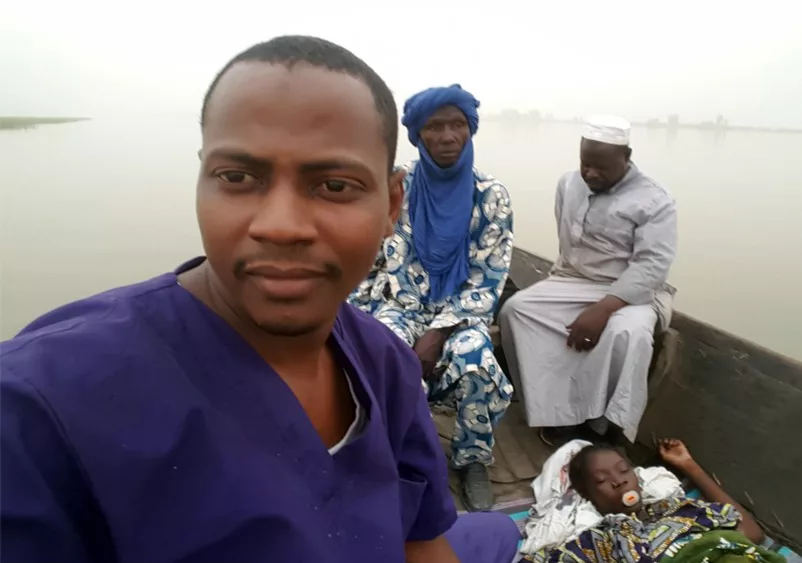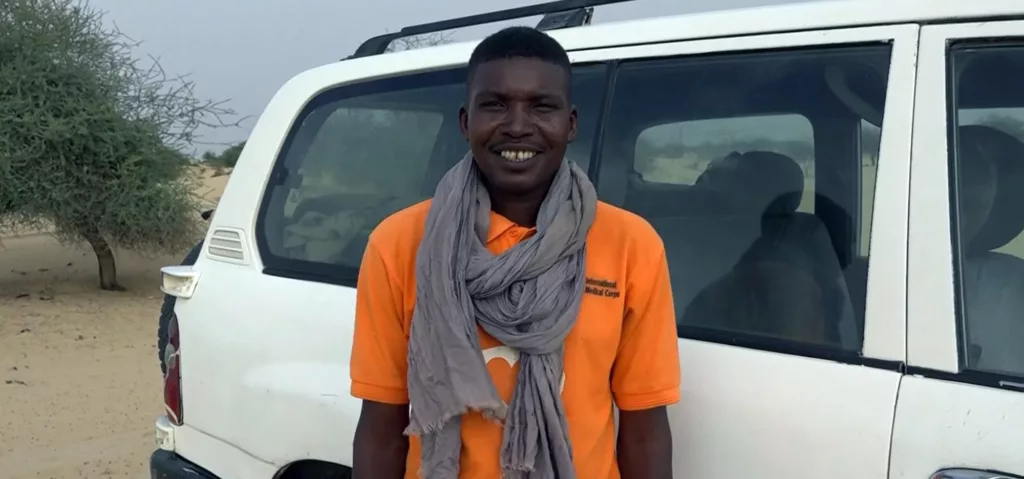Mali has faced insecurity since a 2012 coup d’état caused mass displacement and disruption of public systems, particularly in the northern part of the country around Timbuktu. As instability has spread and the country grown increasingly unstable, crime—particularly robbery and carjacking—has become rampant. Criminals target vehicles owned by government and UN agencies—and even ambulances used to transport patients from primary healthcare centers (PHCCs) to hospitals during emergencies.
The Ministry of Health (MoH) used to operate its own ambulances to transport patients to hospitals, but the area they were able to cover got smaller and smaller until 2018, when carjackers stopped the MoH’s last ambulance near the town of Gourma-Rharous, forcing the patient to get out of the vehicle before stealing it.
“The lack of transport has caused many deaths, because private transport doesn’t exist in some areas,” says former Mali Field Site Coordinator Issa Sawadogo. “Even when transport is available, the cost is often too high. And of course, most private transport is not suitable for people who are suffering from life-threatening health conditions and need care during their journey.”
In addition to carjacking, drivers must also deal with improvised explosive devices (IEDs) that radical armed groups plant along main routes. And the rainy season means roads get flooded by the Niger River, which separates Timbuktu from Gourma-Rharous. Journeys between PHCCs and hospitals on opposite sides of the river can take up to five hours.
In response, International Medical Corps’ Mali team contracted a driver about a decade ago, and began renting a vehicle that we outfitted to use as an ambulance. The ambulance’s owner and driver are well-known and respected by community members—including local criminals. As a result, the ambulance can safely make its journey without being targeted.

“The success of this service is that, at any time, even in the night, the driver can operate the ambulance, and the local community knows him,” Issa says. “Sometimes he’s stopped by the criminals—but when they see who is driving, they allow him to continue.”
Though the driver isn’t an official member of International Medical Corps’ staff, Issa says he’s very committed to the organization’s mission. “Anytime you call him, he’s available. He takes so many risks to transport patients,” Issa explains.
A Difficult Journey
Building on the success of this initiative, International Medical Corps eventually began renting and operating a second ambulance in the region. Because Gourma-Rharous and Timbuktu are on different sides of the Niger River, with no bridge connecting the two sides, having two ambulances ensures that patients can be transported to one side of the river, then be picked up on the other side after being transported there by canoe.
The river isn’t the only challenge faced—and overcome—by our teams. One day, one of the ambulances was transporting a woman in labor to the edge of the river when the delivery staff accompanying the woman realized there wasn’t enough time to make the transfer. “They had to stop the ambulance and make the delivery outside!” Issa exclaims.

The fleet has expanded even further, with two ambulances now running in the communities of Gossi and Bambara Maoudé, both south of the Niger River. Together, the fleet of four ambulances transfers patients from 26 PHCCs in northern Mali—including 16 that International Medical Corps supports—to referral-center hospitals, which are limited in the services they can provide but in many cases are able to ensure treatment. The distance between these PHCCs and the referral centers can be as little as 10 km (6 mi) or as much as 180 km (110 mi). But for severe cases that need to be transferred from the referral hospital to a larger hospital, the distance is typically about 160 km (100 mi) and can take three hours even in the best of weather conditions.
Though the environment is tough, the ambulance service is making a huge difference in northern Mali.
“The communities are so happy to have these services because, many times, this means of transport helps to save the lives of their fellow community members,” he says.
